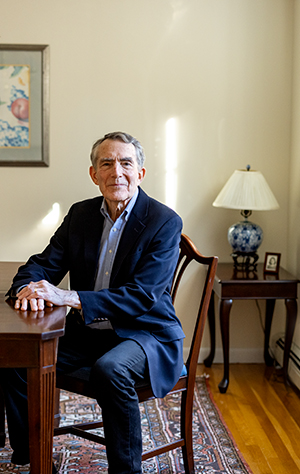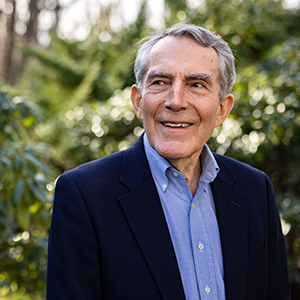Let’s start with the latest school that got a higher
U.S. News ranking than it should have after giving the publication inaccurate data. Were you surprised that Columbia University was in this spot?
No. The only thing that surprised me is that these data manipulators got caught. It takes an unusual set of circumstances to catch somebody doing this stuff. In the Columbia case, you had a faculty member with tenure who was increasingly skeptical of his own university’s claims of ascending the hierarchical ladder.
Somewhat more common is a disgruntled employee in a department of institutional research or provost’s office who comes forward, who smells evidence of fudging the data. Then the schools themselves come forward and admit it. They almost always say it was a mistake.
But the thing is, schools—especially selective and even elite ones—have very powerful incentives to do well in these rankings.
People who do not have kids—or who have young kids or have just never looked at these rankings for whatever reason—may be skeptical of how much power a former news magazine like U.S. News can really have. How much power does it have?
U.S. News has power for two reasons. The first is because [their] rankings are taken seriously by applicants. Why do applicants take them seriously? Because U.S. News got there first, and U.S. News made it news. The second reason has to do with timing. They started at the time when the market for college educations was becoming more national. Until somewhere around the 1970s or ’80s, even high-flying academic superstars would go to school within 100 or 200 miles of where they lived.
The only thing that surprised me is that these data manipulators got caught.”
All sorts of forward-looking people think of the U.S. News rankings as silly and unscientific. But if that were the whole story, you wouldn’t have needed to write the book. So what do people not understand about the power that a ranking conveys?
Higher education has become a status-conferring industry—the major one, or certainly one of them. And U.S. News came along and said, We are going to be the official accountant of status in higher education. We’re going to be the status meter. And people—even the sophisticated ones and probably especially the sophisticated and economically and academically privileged ones—are seeking status.
So there are two things going on here: The schools play along and the families lap it up. Or at least most schools play along. In your book, you describe arriving at Reed and breathing a sigh of relief. But didn’t sitting out the rankings depress application numbers, at least a little?
Probably to some extent. It was always a kind of niche school, but it was very small, so it didn’t have to have mass appeal. It appealed to the very brainy, academically ambitious kids interested in ideas—in digging deeply to understand something better than almost anybody else. That constituency is small enough that, if you establish yourself in that space and have a national reputation, that carries you along.
But undoubtedly, some of those people saw that Reed was tanking in the rankings—since U.S. News would rank us using whatever data they could actually get their hands on—and applied elsewhere.
Is that why so few schools followed Reed’s example?
There were two front-page stories in The Wall Street Journal about U.S. News punishing us by dumping us in the bottom quartile of the rankings. That caught everyone’s attention in higher education. U.S. News succeeded in making its point, and that proved to be a deterrent.
My strong sense over the years is that even Amherst was worried, at least a little. On that note, one thing that may surprise readers is your description of colleges engaging in “hand-to-hand combat.” Are things really that intense?
Well, it’s probably a bit of an exaggeration. But the selective colleges that are the focus of the book are really quite intensely competitive. This is a competitive industry. Colleges are competing first of all for prestige and status. They’re of course competing for students of a certain kind. They compete, many of them pretty intensely, for faculty. They compete for foundation grants. They compete for headlines. The rankings, in many ways, become a kind of win-loss percentage. It’s based on your actual performance in the field. It’s the win-loss percentage against the good teams.
But that assumes that you agree with how U.S. News keeps score, which I know you don’t. You use the phrase “affirmative inaction” in the book. Can you tell us more about that?
The rankings themselves almost completely ignore race. If 10 percent of it was determined by the percentage of Black students, I bet you damn well that people would scramble to increase the percentage of Black students. And they don’t give schools like Amherst, which led the pack among elite liberal arts colleges in bringing in more low-income students who qualify for Pell Grants, enough credit.
Let’s talk more about money. There’s no factor in the U.S. News formula that directly addresses who pays what and why. But in the book, you tell the kinds of stories about money and other elements that should matter more if you’re going to evaluate these institutions. You mentioned a fellow college president who talked about how awarding five $10,000 merit aid scholarships—that have nothing to do with financial need—can persuade five students to come, while one $50,000 need-based grant delivers just a single student. Which college president said this?
I’m not going to tell you. But it’s a very highly regarded liberal arts college in the Midwest, I’ll give you that much.
So let’s say a certain Midwestern school operates in this sort of way. How much offense should we take at that?
I dislike the fact that at some schools, they give out merit aid while also not meeting the full demonstrated need of students who have applied for financial aid. The needy students in effect are paying for this merit aid strategy. I looked at the list of U.S. News universities from about 25 to 75, and I got data on the percentage of need that they meet with their financial aid packages, and you can see a clear falling off as the amount of merit aid they’re giving is increasing.
You might say they won the game that matters to them.
Wait, but what game matters to them, then?
Simply serving lower-income students of academic quality wasn’t the game that ultimately mattered to them. The game that mattered to them was moving up in the prestige order of things. But give them credit for playing the game successfully.
Is there something ethically wrong with a family that has no financial need trying to get merit aid money from a school that might otherwise use its budget and bidding for students to enroll more low-income matriculants? Is it bad to accept merit aid from a school that is trying to, in effect, buy better students to improve its reputation and rankings?
This is the American system, right? You negotiate for real estate. You negotiate for used cars. You negotiate for college. I get it. But I really don’t like the kind of secret deal-making, student by student, which is what I think is going on in a lot of these places.
Is buying a house simple? Is choosing a life partner simple? This is on a scale of that magnitude.”
If the rankings aren’t the right way to figure out where to go to school, what is? My sense of it is that college shoppers don’t think hard enough about what they’re actually shopping for, while most colleges do a lousy job of differentiating themselves. Do both of those things ring true to you?
I think that’s right. One of my biggest complaints about the rankings phenomenon is its claim that you can simplify the process of choosing a college. Is buying a house simple? Is choosing a life partner simple? This is on a scale of that magnitude. This is big.
So my view is that it shouldn’t be simple. It’s an unbelievably complex thing that you’re doing, product you’re buying, service you’re getting and experience you’re tapping into. And it should start with a little bit of self-examination. Don’t just say, “What’s the best college?” Just say, “Who am I?”
I call it a “life experience,” not just a consumer product. It is the life transformation from being dependent on your family to becoming independent. It’s about coming to discover much more about who you really are and figuring out how to regulate yourself and not simply be dependent upon parents or grandparents breathing down your neck.
You’ll change jobs seven times; you’ll change careers five times. You have to rediscover yourself and redefine yourself. So I do think that college is about equipping you for that, not just preparing you for the first job that you get or preparing you to get into graduate and professional school so that you can then discover yourself for another two or three years.
I sent a note to Bob Morse at U.S. News, and told him I was talking to you, and asked him if there was a question that he wanted to put to you. He declined to comment. What do you want to ask him?
[Laughter, uproarious.]
“How do you live with yourself?”
No, look: He’s very successful at what he does, and he’s been doing it for a very long time. The fact is that I figure he’s heard it all before—he really has. And they’ve just learned that they don’t really need to respond to these criticisms. They’ve got an enterprise that seems to work.
Ron Lieber ’93 is the author of The Price You Pay for College: An Entirely New Road Map for the Biggest Financial Decision Your Family Will Ever Make. He’s been the Your Money columnist for The New York Times since 2008.
Illustration by Andrea Cobb
Photographs by Jessica Scranton


